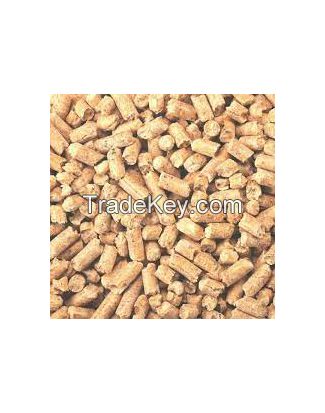Description
Wood pellets are small, cylindrical pieces of compressed wood,
typically made from sawdust, wood shavings, or other wood
by-products. They are used as a fuel source in heating systems and
as bedding for animals.
**Key Characteristics:**
- **Material:** Wood pellets are primarily made from hardwood,
softwood, or a blend of both, which are processed and compressed
into pellets.
- **Size and Shape:** They are usually about **8 mm in diameter and
****0 mm in length. The uniform size allows for consistent
burning.
**Uses:**
- **Heating:** Wood pellets are commonly used in pellet stoves,
pellet boilers, and pellet furnaces as a renewable energy source
for residential and industrial heating. They are favored for their
high energy density, efficient burning, and low ash production.
- **Animal Bedding:** They are also used as bedding for livestock
and pets, as they are absorbent and help control odors.
**Advantages:**
- **Efficiency:** Wood pellets have a high energy content and burn
efficiently, producing a steady heat output with minimal ash.
- **Sustainability:** They are considered a more sustainable energy
source compared to fossil fuels because they use waste wood
products and reduce reliance on non-renewable resources.
- **Low Moisture Content:** Pellets have a low moisture content,
which improves combustion efficiency and reduces emissions.
**Storage and Handling:**
- **Storage:** Wood pellets should be stored in a dry place to
prevent moisture absorption, which can affect their burning
efficiency. They are often kept in a pellet bin or silo.
- **Handling:** They can be fed into heating systems automatically
through augers or conveyor systems.
Overall, wood pellets are valued for their efficiency,
sustainability, and versatility in both heating and animal care
applications.


